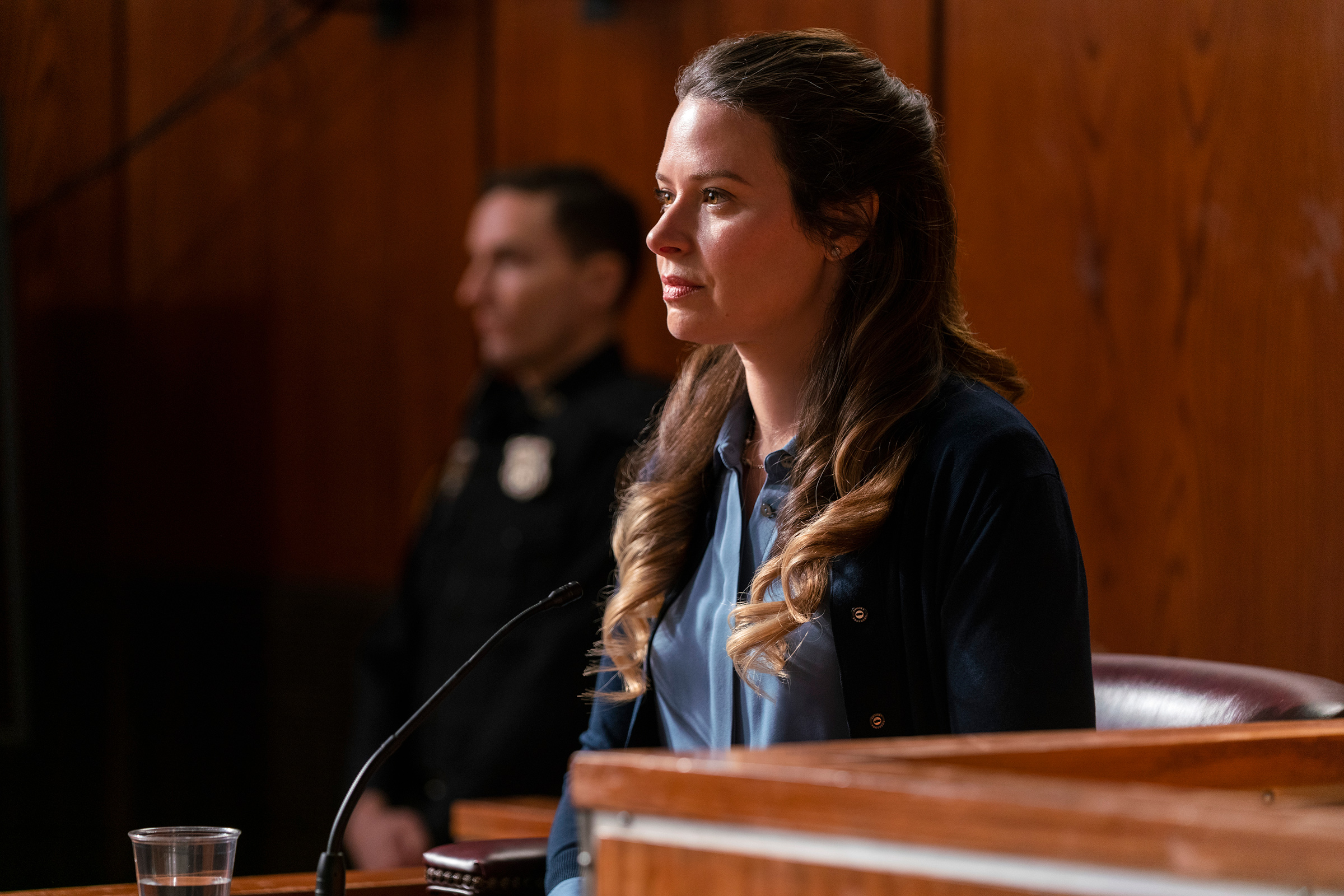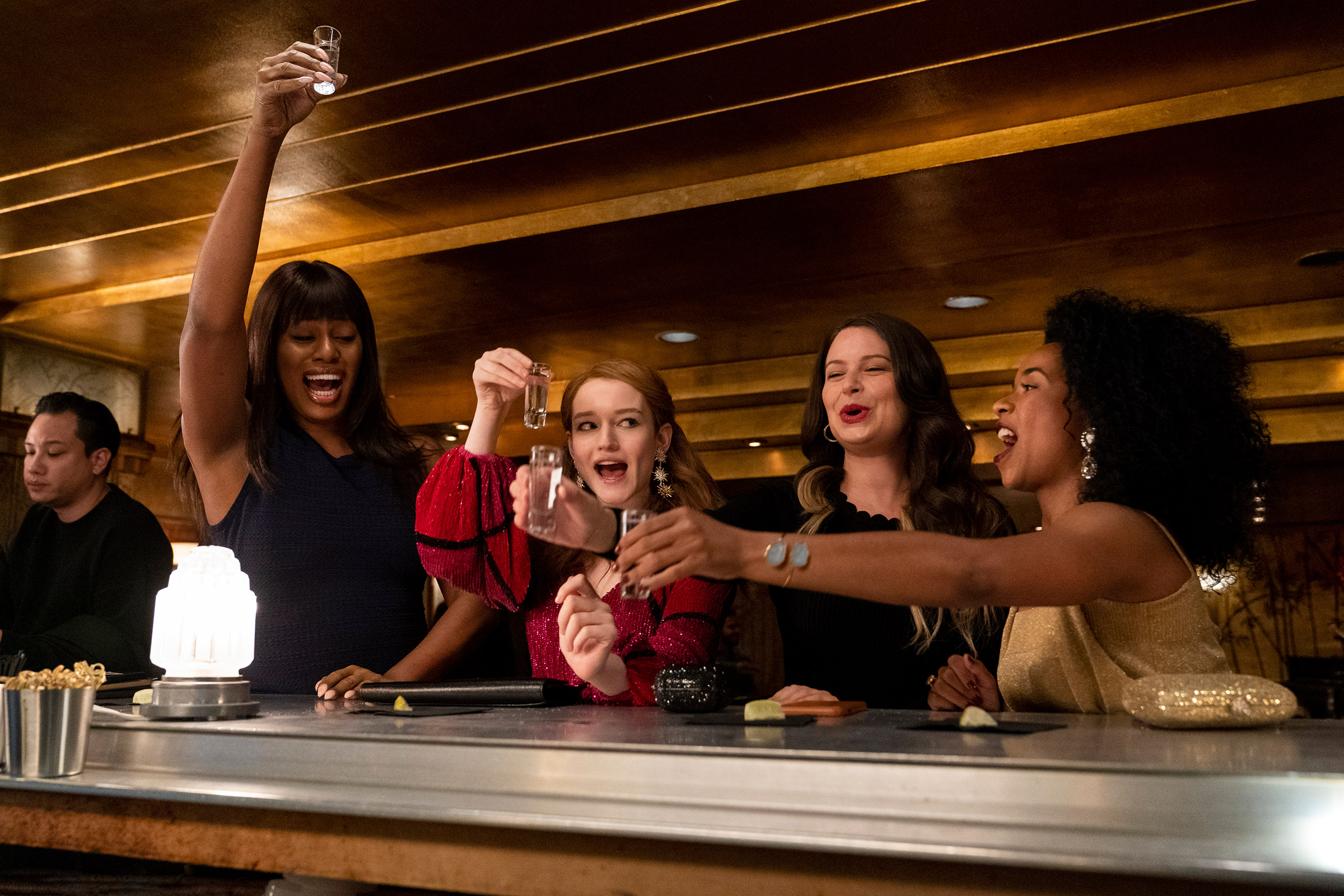
Almost exactly one year ago, on Feb. 11, 2021, Anna Sorokin—better known to the world as fake heiress “Anna Delvey”—was released from prison. She had served three years and three months of her four-to-12-year sentence.
Just hours after regaining freedom, Anna took to Twitter: Someone from Fortress Investment Group—I need $720m by the end of next week, DM me. Her bio on the platform read, I’m back.
Wasting no time, Anna checked into the swanky NoMad hotel in midtown Manhattan and hired a film crew to follow her around. “I’m just kind of filming everything I’m doing right now and I’m going to see what to do with it later,” she explained in an interview with Insider. “I just got out of prison, like two days ago. So it’s me like getting all this stuff from Sephora, me opening a bank account as soon as I get permission from my parole officer . . .”
Makeup, money, and a vanity project.
Anna said it herself on Instagram a few weeks later: “I’m nothing but consistent.”
More than four years have passed since I helped the police set up a sting operation to arrest my former friend, the conwoman whom I knew as Anna Delvey. I later testified at her trial, describing the events that left me with more than $60,000 in credit card debt after an “all-expenses-paid” trip to Morocco with Anna and two others. That debt was well over what I made in a year. At her trial, Anna was found guilty of swindling more than $200,000 from hotels, banks and other institutions; she was found not guilty of stealing from me.
Read More: Anna ‘Delvey’ Sorokin Was My Friend. Here’s How I Helped Bring the Fake Heiress to Justice
It was destabilizing to have been so wrong about someone I trusted. Before the trial, I began writing to process what had happened, so I could learn from it and hopefully leave it behind. It wasn’t until I was contacted by a reporter from New York magazine that I realized my involvement with Anna would soon become public, with or without my consent. So I decided to turn my thoughts into an article for my then-employer, Vanity Fair, and later a book, My Friend Anna, hoping my story would serve as a cautionary tale.
Because I became an author, I’m asked on occasion whether I’m grateful for what happened between Anna and me. My answer is of course not. But I am proud to have overcome the ordeal well enough for such a question to seem reasonable.
The sense of closure I felt after publishing My Friend Anna in July of 2019 lasted until that October. I was walking home from dinner one night when a friend sent me a link to an article about Inventing Anna, a Netflix miniseries created and produced by Shonda Rhimes, based on the New York article, “How Anna Delvey Tricked New York’s Party People” by Jessica Pressler. I immediately clicked the link.
Because I was not involved with the show, I learned at the same time as the rest of the world that it would feature Katie Lowes as a character named “Rachel,” described by Netflix in the following terms: “A natural-born follower whose blind worship of Anna almost destroys her job, her credit, and her life. But while her relationship with Anna is her greatest regret, the woman she becomes because of Anna may be Anna’s greatest creation.”

I had sold the option to adapt my story (not to Netflix, but to HBO), so I expected there would be times when the dramatization of my experience would make me uncomfortable. I understood that stepping into the spotlight came with certain risks—I would only have so much control over how I was portrayed. But this Netflix description felt shocking. The woman she becomes because of Anna. Seven little words that in one fell swoop stripped me of my agency, accomplishments, and truth. Were we meant to believe that the woman I had become was not on account of the parents who raised me, the love I shared with family and friends, my own efforts or personal growth, but because of Anna?
Inventing Anna premieres Feb. 11. Brought to life by one of TV’s most popular creators and starring an Emmy-winning actor, the show is poised to be a hit. Millions will watch as Anna is portrayed as a complex anti-heroine fighting against her personal demons and a world that constantly underestimates young women. It will be seen by more people than will ever meet Anna or do the work to understand her real nature or what really happened. And that is a dangerous reality.
It was Feb. 12, 2021 when I learned Anna had been released from prison. I was relieved by how little this update affected me—until a wave of interview requests came rolling in from journalists around the globe. At first, I ignored them, not wanting to rehash the past, and feeling like it would be presumptuous to speculate about whether Anna had changed or what she might do next without giving her a chance to show us. She had done her time and that was that.
But while I turned down press requests, I watched media outlets give Anna a platform without holding her to account, with strangely convivial interviews in which she tried to pass off criminal behavior as a form of high art. Talk is cheap and con artists are good at it, I thought, Why are we handing one a microphone? But we know the answer. Anna, a brazen con artist with highbrow taste, low-brow morals, and no apparent regard for the consequences of her actions, gives a certain, loud corner of the media exactly what they want.
I read the headlines—Fake Heiress Anna Sorokin Says She Takes Being Branded a ‘Sociopath’ as a Compliment . . . Says Her Prison Sentence Was ‘a Huge Waste of Time’ . . . Sets Her Sights on Influencerdom with a New Vlog Series. I understood the implications of this sort of coverage, the glamorization of criminality, and I wondered who would speak up. I did not want it to be me. The issue was much larger than my past drama with Anna, larger than Anna, too, and larger than any one story—it’s a big-picture problem.
Forty-two days after her release, Anna was taken into custody by U.S. Immigration and Customs Enforcement and detained after a judge made note of her interviews and antics and declared her “a danger to society.”
From Bergen County Jail in Hackensack, N.J., Anna spoke to a reporter from the Telegraph. She said that if she were to agree to leave the country, she would likely be released, but she preferred to be detained in the United States than free in Germany. “I have a whole life in New York,” she said. “If I have to spend a week or two in jail to sort it out, I think that’s reasonable. When you look at it like a mathematical equation it adds up.”
Her evocation of math inspired me to run a few numbers of my own, in an effort to account for how Anna, a convicted criminal, was profiting from her notoriety. According to BBC News, which obtained a copy of the Inventing Anna contract through a Freedom of Information Act request, Netflix paid Anna an initial fee of $30,000 pre-trial. This money “went directly to her lawyer, Todd Spodek, to cover a portion of his fees,” the NY Post reported, citing court filings. Netflix subsequently paid Anna more for the rights to adapt her life story, bringing her payment up to $320,000. This money was frozen so that victims of her crimes could file lawsuits to make claims, which some of them did. But the remaining funds went to paying the balance of her attorney fees and then to Anna herself. According to the Sunday Times, she used those funds to buy a haul of designer clothes on Net-a-porter over the prison phone. When asked where she got the cash, Anna told the reporter, “I still have some money from Netflix,” before vaguely referring to other unnamed projects.

The “Son of Sam” law was created to keep convicted criminals from profiting off their stories after a serial killer sold his story rights for a murder spree he committed in the mid-1970s. In its modern form, the law gives the New York Crime Victims Board the power to freeze any profits earned by criminals in the state so that victims can sue. But how do we define profit? And what about that window of time before a verdict is reached?
When asked if crime pays, Anna told BBC Newsnight: “In a way, it did.” Do we care more that she made this outrageous statement than we do that it seems to be true?
If your crimes are splashy enough, a media company could snatch up the rights to your story pre-trial so that you’re able to afford the attorney of your choice, one skilled enough to minimize your penalty. You could be paid so much money that even after your funds are frozen and victims are repaid, you have cash left over. And, not only that, but if fame is what you’re after, you’ll have built yourself a “brand,” created a platform, and found an audience to leverage for future opportunities.
“Netflix declined to talk to the BBC about whether their payments may have affected the justice process,” I read in an article. “The OVS [Office of Victim Services, responsible for enforcing the Son of Sam law] has clarified that Netflix came to them initially, it did not need to chase them, and all U.S. rules were followed.” This does not put my mind at ease, and it shouldn’t put yours at ease, either.
Read More: Why We Are Drawn to True Crime Shows
In his opening remarks during the trial, Anna’s attorney tried to present her as someone who, like so many others, came to New York with sky-high dreams and a willingness to hustle. The idea of “making a brand-new start of it” here, he said, “resonates with people all over the world.” Anna’s way of going about “making a brand-new start” is not the example we need for the next generation, already absorbing the messages and mimicking the behaviors of “influencers” they see online.
“She’s a role model to some people,” her lawyer said later in an interview with 60 Minutes Australia. “She’s obviously famous. People like engaging with her. Her social media is blowing up. So, I hope that she can harness all of this into something really positive, productive, and monetize on it. I hope she can make a real business out of it.” If Anna’s business with Netflix is any indication, she’s on the right track. (Netflix did not respond with a comment on this story.)
This is what I’ve learned: people, like ideas, only have as much power and influence as we give to them. Without even realizing it, I gave Anna enormous power and influence over me—power and influence I then spent years working to reclaim. Anna is clever. She can be funny. I, too, used to find her amusing. Like others do now, I once marveled at her audacity, at the way she plays by her own rules, at the grandiosity of her dreams, and at her ridiculous, outsized confidence. It’s easy to be captivated by larger-than-life characters who defy our expectations, especially when we think we have nothing at stake.
But I have come to understand that your attention is an investment. Giving someone your attention is the act of being influenced, whether or not you’re aware of it in the moment. And especially in this age of constant stimulation, with endless people and stories competing for your clicks, likes, follows, and time, your attention has value. It has power. It’s worth something—it can even put money in someone’s pocket. Be careful where you spend it, and understand the cost.
Copyright © 2019 by Rachel DeLoache Williams. From the book My Friend Anna: The True Story of a Fake Heiress by Rachel DeLoache Williams, published by Gallery Books, a division of Simon & Schuster, Inc. Printed by permission.
More Must-Reads from TIME
- Donald Trump Is TIME's 2024 Person of the Year
- Why We Chose Trump as Person of the Year
- Is Intermittent Fasting Good or Bad for You?
- The 100 Must-Read Books of 2024
- The 20 Best Christmas TV Episodes
- Column: If Optimism Feels Ridiculous Now, Try Hope
- The Future of Climate Action Is Trade Policy
- Merle Bombardieri Is Helping People Make the Baby Decision
Contact us at letters@time.com